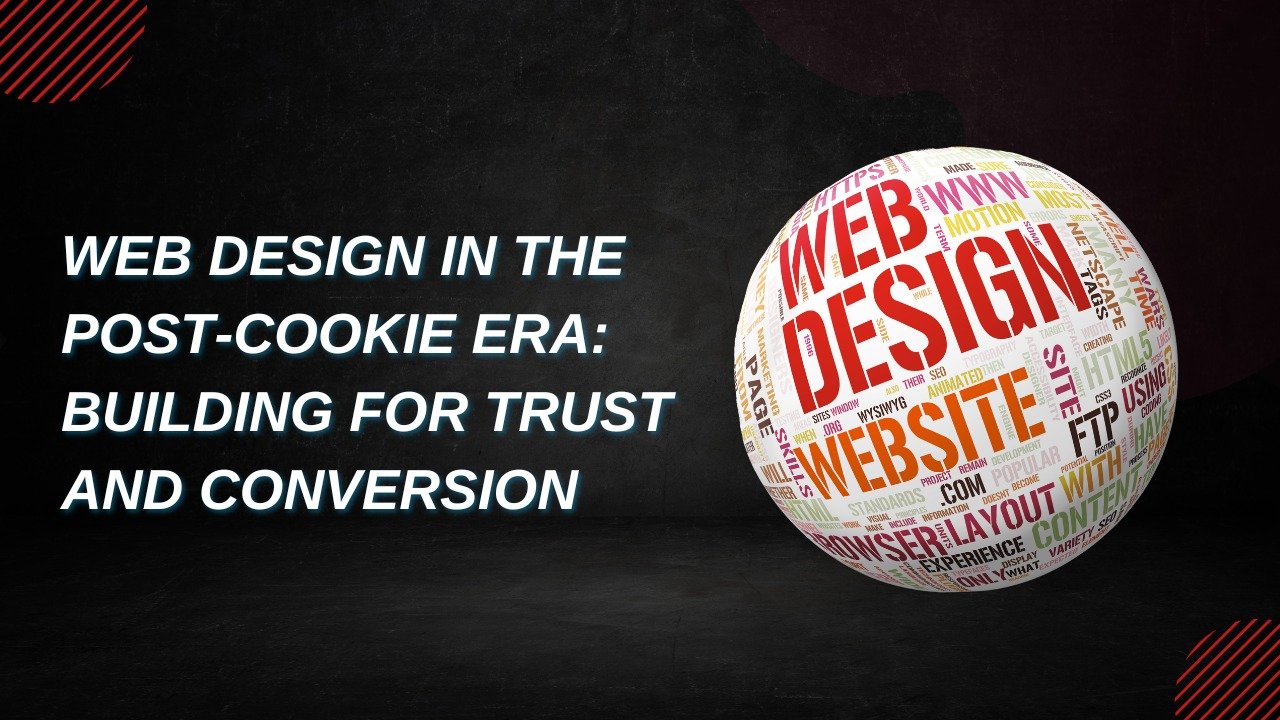Web Design in the Post-Cookie Era: Building for Trust and Conversion

For years, the secret sauce behind much of the digital world has been a tiny piece of data: the third-party cookie. It silently tracked users across the web, allowing brands to deliver hyper-personalised ads and experiences. As a business owner, it made marketing feel a bit like magic.
But the magic is fading. With major browsers phasing out third-party cookies, the era of behind-the-scenes tracking is ending. This has sent shockwaves through marketing departments, but it’s also created a monumental opportunity for anyone involved in web design.
Why? Because the new digital landscape isn’t about tracking users; it’s about earning their trust. And your website is the frontline of this new relationship.
The end of cookies isn’t the end of personalisation—it’s the beginning of a more honest, human-centric web. This is your guide to adapting your web design strategy to build for trust and conversion in the post-cookie era.
The Great Shift: From Tracking to Earning
The old model was simple: track user behaviour without them knowing and use that data to retarget them. It was efficient, but it often felt… creepy.
The new model is built on a value exchange. You provide such a great experience and so much value that users are willing to share their data with you voluntarily. This shifts the power from covert data collection to conscious relationship-building.
Your website is no longer just a sales tool; it’s a trust-building engine. The principles of web design are now intrinsically linked to data ethics and user consent.
The New Pillars of Post-Cookie Web Design
To thrive in this new environment, your web design must be built on three core pillars: Trust, Value, and Clarity.
1. Design for Trust and Transparency
Without trust, users won’t share their data. Your site’s design must scream credibility from the moment it loads.
- Clear Value Propositions: Immediately tell users what’s in it for them. Why should they stay, explore, and trust you? Your headline and hero section are critical.
- Social Proof as a Design Element: Integrate testimonials, client logos, case studies, and trust badges seamlessly into your layout. Don’t hide them at the bottom of the page. A study by Nielsen Norman Group (external link) confirms that displaying trust elements prominently is key to perceived credibility.
- Transparent Data Usage: Be upfront about how you use data. A well-designed, easy-to-understand privacy policy link in the footer is a must. Consider a simple, friendly pop-up that explains why you’re collecting data and how it benefits the user.
2. Create Value-Driven Experiences that Encourage Voluntary Data Sharing
Why would someone give you their email address? The answer must be: because the reward is worth it.
- Gated High-Value Content: Your web design should showcase your best resources—ebooks, webinars, exclusive reports—and use clear, enticing forms to gate them. The design should make the value of the exchange obvious.
- Interactive Tools and Quizzes: These are fantastic for first-party data collection. A well-designed quiz or calculator provides immediate, personalised value to the user, making them happy to share their information in return. The design should be engaging and the user flow seamless.
- Personalised On-Site Experiences: Use the first-party data you do have (e.g., from a login) to create a customised experience. Think: “Welcome back, [Name]! Based on your last purchase, we think you’ll love this.” This demonstrates the benefit of sharing data.
3. Master the Art of the Consent Journey
The cookie consent banner is no longer a legal nuisance; it’s a critical touchpoint in your user experience. A poorly designed one can destroy trust and drive people away.
- Ditch the Dark Patterns: Avoid confusing language, pre-ticked boxes, or designs that make it hard to reject cookies. This erodes trust instantly.
- Use Clear, Human Language: Instead of “Accept All,” try “Accept Recommended Settings.” Explain what each category of cookies does in plain English (or Urdu!).
- Make it a Value Proposition: Frame it positively. “We use cookies to remember your preferences and give you a more personal experience. Is that okay?” Our guide on creating user-first privacy experiences dives deeper into this. (Internal Link)
Practical Design Strategies for a Cookieless World
So, what does this look like in practice? Here are actionable web design tactics to implement today.
Optimise for Performance and Core Web Vitals
A fast, reliable website is a fundamental form of respect. Google uses Core Web Vitals (loading speed, interactivity, visual stability) as ranking factors, and a slow site tells the user you don’t value their time. Performance is a cornerstone of trust.
Double Down on Intuitive User Experience (UX) and Navigation
If users can’t find what they need, they’ll leave. And they certainly won’t opt-in.
- Clear Information Architecture: A logical, simple menu and site structure help users feel in control.
- Prominent Search Functionality: A great search bar acts as a personal assistant, helping users find value quickly.
- Strategic Call-to-Action (CTA) Placement: Guide users gently towards value exchanges with well-designed, contextually relevant CTAs.
Build Engaged Communities On-Site
The less you can rely on external platforms (and their data), the stronger you are.
- Integrated Comments and Forums: Encourage conversation and repeat visits directly on your site.
- Members-Only Areas: Use web design to create exclusive sections for loyal customers, rewarding them for their relationship with you.
The Future is Built on First-Party Relationships
The post-cookie world isn’t a limitation; it’s a call to be a better business. It forces us to create websites that are so useful, so trustworthy, and so valuable that people want to have a relationship with us.
The role of web design has never been more strategic. It’s the discipline that builds the digital storefronts where these new, transparent relationships are formed. It’s about designing for people, not for trackers.
Are you ready to build a website that doesn’t just look good, but builds good? A site that converts by building trust first? At ARSL, we’re helping businesses future-proof their digital presence with web design strategies that are both beautiful and built for the new privacy-centric web.



